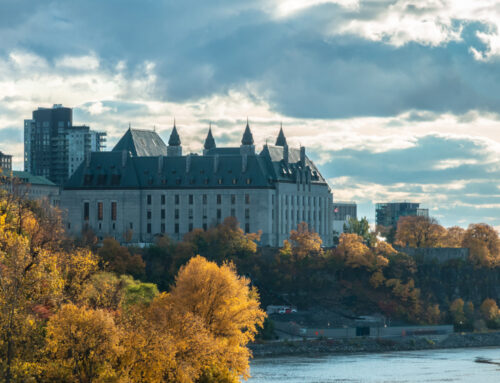“To me, a lawyer is basically the person that knows the rules of the country. We’re all throwing the dice, playing the game, moving our pieces around the board, but if there is a problem the lawyer is the only person who has read the inside of the top of the box.”
—Jerry Seinfeld

“Jon and his firm are a fine-tuned machine that processes legal disputes through the court system and gets a resolution according to the law. I was very fortunate to find Jon and his firm and am grateful for the help he got my children and family.”
—Anonymous


Ashwini is fluently trilingual and is happy assisting clients in English, French and Hindi. Her areas of interest are wills and estates, estate litigation, real estate, civil litigation, and family law.
This article will seek to answer the following questions about the Small Claims process:
- What is Small Claims Court?
- What kind of cases go to Small Claims Court?
- How much does it cost to apply to Small Claims Court?
- How to file a Claim in Small Claims Court
- What is Mediation?
- What is a Counterclaim?
- What is a Third Party Claim?
*Disclaimer: This post is designed to be a source of information about the small claims process, but is not intended as legal advice. Should you have specific questions about your legal issue, please contact a lawyer.
1. What is Small Claims Court?
B.C.’s Small Claims Court is part of the provincial court system and is designed to address civil disputes ranging from $5001 to $35,000. In this context, “civil disputes” means disputes relating to disagreements between two or more individuals, and does not include criminal or family law issues.
As we all know, the legal system can be expensive to navigate—putting justice out of reach for many. In response to this, the Small Claims Court seeks to provide access-to-justice for those citizens who may not otherwise be able to afford to bring their claims forward at the Supreme Court level.
Generally, Small Claims Court processes are less expensive and complicated than those of the Supreme Court and are designed to encourage self-representation and out-of-trial settlement in order to keep the costs as low as possible.
Should an agreement outside the courtroom not be possible, the Claim will then be resolved at settlement conference or trial by a judge.
2. What kind of cases go to Small Claims Court?
As noted above, the B.C. Small Claims Court hears claims for damages ranging from $5,001 to $35,000. In this context “damages” means a monetary award to be paid as compensation for a harm or loss. Claims under $5,000 must be taken to the online Civil Resolution Tribunal (CRT), which also deals with many motor vehicle Claims up to $50,000. (The specifics of the CRT will not be addressed in this post.)
Subject to the monetary restrictions noted above, the Small Claims Court has the jurisdiction to make decisions relating to:
- the performance of agreements or contracts relating to personal property (but not land) and/or services;
- the recovery of debt or damages; or
- disputes over personal property (but nothing relating to interests in land).
Though you can bring a Claim over $35,000 to the Small Claims Court, a provincial judge cannot award more than $35,000 plus interests and expenses. Therefore, if you decide to bring the Claim to the Small Claims Court, you must abandon any amount exceeding the $35,000 mark.
3. How much does it cost to apply?
If you are applying without the help of a lawyer, you can pay the fees with cash, debit card, cheque, money order, or bank draft. For a complete list of current fees, please visit: Small Claims Rules (gov.bc.ca).
If you cannot afford to pay the fees, you can make an application every time a court fee is due for the court to wave the fees. To apply you must complete a form called Application to the Registrar, provide a Statement of Finances, and submit them to the court registry together with your financial information like tax receipts and bank statements. All of the Small Claims Forms can be found here: Small Claims Forms (gov.bc.ca).
4. How To File a Claim in Small Claims Court
The Small Claims Court’s procedures have been created so people can—if they want to—represent themselves without the aid of a lawyer. The usual process of any lawsuit follows the following steps:
- The party starting the legal action (the Claimant) files a Claim, using the Notice of Claim form. The filing party may initiate a Claim against one or more individuals, a company, or a society.
- The form is served to the defendant (the party being sued). This is a formal process that requires “personal service”, meaning that you or someone acting on your behalf must hand the Notice of Claim to the defendant or other party. (Please note: different procedures apply if the defendant is under the age of 19.) This is the first official notice of the lawsuit the defendant (or another party) will have.
- After being served, the defendant will have 14 days to file a reply if they are in B.C. or 30 if they are outside of B.C. The defendant may also respond with a Counterclaim or with a third-party Claim, both explained further below.
- If the defendant does not file a Reply within the time limits established above, the claimant can file an Application for a Default Order using Form 5. In this circumstance, the claimant will not need to prove their claim at trial—although they still may need to prove the value of the damages they are seeking.
- If the defendant does file a Reply, the court will hold a settlement conference, with a judge in an attempt to come to an agreement. Both the claimant and the defendant must attend the settlement conference. Failure to appear may result in the claim being dismissed or a judgement being entered. At this stage, the judge may dismiss the Claim, if they are unconvinced of its validity.
- If no agreement is achieved, the case goes to trial. Both parties will have the opportunity to tell their side of the story, present evidence, bring witnesses, and respond to what the other party says. When the judge makes a decision, a court order is prepared.
- After the trial, the judgement must be enforced by the Claimant, who in order get the defendant to pay. The court does not collect the money for the winning party. If one of the parties is dissatisfied with the judge’s decision, they may appeal the decision to the Supreme Court of B.C.
5. What is Mediation?
Mediation is a negotiation process in which an impartial third party, known as a mediator, aids the parties in identifying and evaluating possibilities and negotiating a resolution to their disagreement. Mediation is an alternative dispute resolution method, which may be less costly and lengthy than a trial. Also, using Mediation can improve the odds of safeguarding the prospect of a future reconciliation between the parties.
In Small Claims Court, either party can file and serve a Notice to Mediate (in Form 29) on the other party if the claim is for more than $10,000. This will require the other party to attend a mediation, and may lead to the resolution of the claim.
6. What is a Counterclaim?
A Counterclaim is a Claim against the Claimant. Basically, the defendant is now suing the Claimant. It is a standalone Claim—filed in a different form. It must, therefore, have a legal basis and a reasonable basis for success.

7. What is a Third Party Claim?
It is a Claim against someone not named in the first Claim, and it is made when the defendant believes that a third party should pay all or part of the Claimant’s Claim. Depending on whether a settlement conference, Mediation session, or a trial conference has already been held, the defendant may need to apply to the court to allow that the Counterclaim be filed against the third party. The defendant must then fill out a Third Party Notice and ensure the Claim has legal basis and a reasonable basis for success.
Conclusion
It might be helpful to bring a family member or trusted friend for emotional support and also to help you by taking notes and organizing your documents. You can review the provincial court’s guidelines for support persons here: Use of a Support Person in Civil and Family Proceedings (provincialcourt.bc.ca).
While the creation of the Small Claims Court was intended to facilitate self-representation, it is undeniable that legal proceedings can be time-consuming and emotionally onerous; all things considered, seeking advice from a lawyer may be beneficial. A lawyer can tell you your chances of success, what you will need to prove, and what evidence you will need to present to establish your Claim or defence.
There are, of course, a number of aspects about Small Claims Court cases we have not covered here. The above is intended just to give you an idea of the process. For more information, please contact one of our lawyers, or visit Small Claims Court – procedures and fees – Province of British Columbia (gov.bc.ca).
On our blog, we have several videos prepared by one of our founding partners, James Legh. These videos can help you better prepare for court. Take the time to view them and reach out for any questions you may have.
Many thanks to you, Danni. You were one of the few people who guided me through some very dark and trying days.
I couldn’t imagine using any other law firm.
Danni, being smart and keeping calm are two key things. The third is, you don’t drop the ball.
Tyler Luchies has been an incredible lawyer for many different situations. Thank you!!!
There is a special place in heaven for you. Thanks for getting me to the finish line.
You all will always be a big part of my life.
She was always available to listen to my questions and concerns and was able to explain and reassure with a caring professionalism.
Jim Legh is funny and makes relief from stressful situations.







